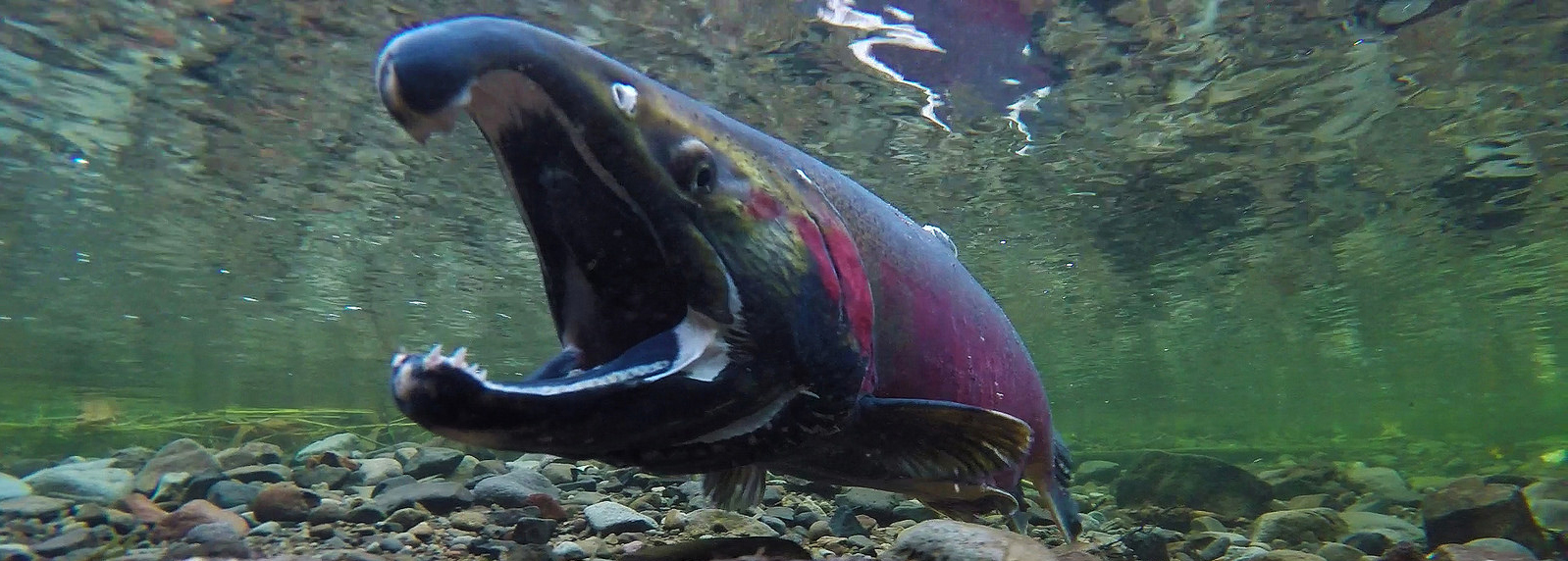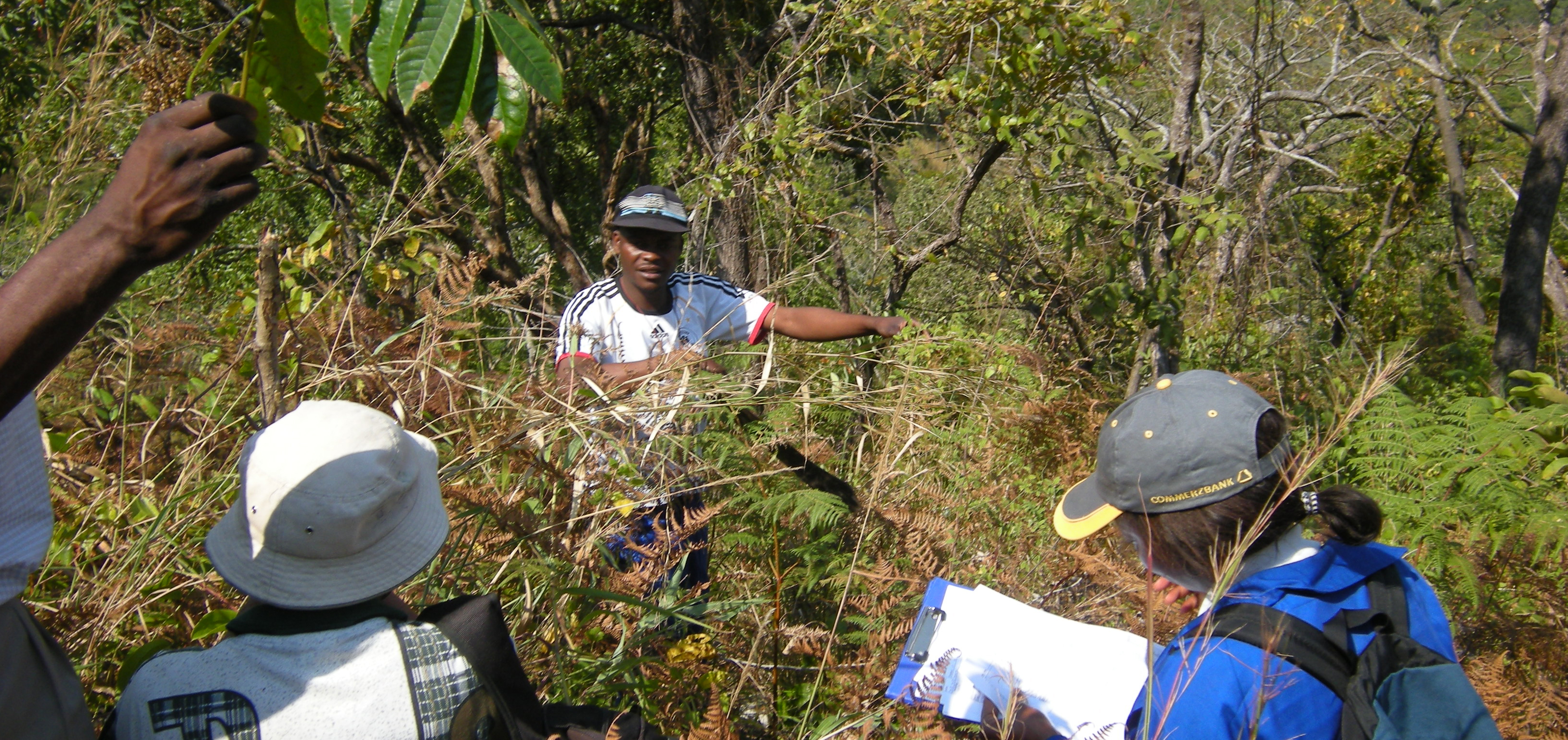From theory to practice: lessons in ecosystem services from Indonesian mangroves to Oregon estuaries
2017 Annual Meeting of the Ecological Society of America:
Linking biodiversity, material cycling and ecosystem services in a changing world
6–11 August 2017

Safe space in the Salmon River. A Coho male in his mating colors heads up the Salmon River in western Oregon during spawning season, in November 2014. Estuaries, where flowing fresh water meets ocean tides, provide many benefits to people. In the Pacific Northwest, they host culturally and commercially valuable Dungeness crab, Pacific oysters, and all species of Pacific salmon. Research in the natural laboratory of Oregon’s most restored estuary, at the mouth of the Salmon River, has delivered insights into restoration strategies, establishing, for example, the importance of a functioning salt marsh for the rearing of young Coho. Rebecca Flitcroft of the USDA Forest Service’s Pacific Northwest Research Station will discuss her experience putting such findings into a relevant context for resource managers, through specific examples of successful management applications during Symposium 8 at the 2017 ESA Annual Meeting. Credit: Bureau of Land Management, CC BY 2.0. Original image cropped to fit.
Ecological researchers care deeply about the health of the systems they study, but do not always know how to put into practice the knowledge they acquire through experimentation. Scientists who have worked at the interface of discovery and application will share fresh research and stories of success and challenge, coming together in discussion to find the threads of shared experience, on Tuesday, August 8th in a symposium on “Integrating Ecological Science into Policy and Management for Ecosystem Services: Challenges and Keys to Success” during the Ecological Society of America’s 2017 Annual Meeting in Portland, Oregon.
“At ESA meetings I hear about so many really interesting studies of biodiversity and ecosystem functions. I don’t hear much about how to quickly convert that cutting-edge knowledge into usable tidbits for the forestry managers and the fisheries managers who need to apply it to public lands and resources, or for ranchers trying to adapt their business to climate change,” said symposium organizer Bruce Byers.

Trickle-down ecosystem services. On a hillside in the Liwonde Forest Reserve, Malawi, a team conducts a natural habitat survey in July 2016 to document the biodiversity of the region and study the potential for regeneration in the woodlands and forests that protect the upper watersheds of the Shire River Basin. The project, led by Bruce Byers and his Malawian colleague, Daulos Mauambet, is part of a World Bank-funded program to assist Malawi in developing a long-term, sustainable use plan for the basin’s natural resources. The Shire provides water for homes, businesses, agriculture, hydropower, and fisheries for millions of people in southern Malawi. Byers works to translate ecological knowledge about the role of biodiversity in the healthy functioning of the river’s ecosystems into actionable policy recommendations for the management of the system. Credit: Bruce Byers.
Byers has experience from the academic’s and the practitioner’s perspective. His career started on a traditional trajectory, with a decade as an ecology professor at the University of Colorado. Following a policy fellowship at the U.S. Agency for International Development (USAID), he changed direction. His private consulting firm carries out assessments, analyses, and applied research on behalf of government agencies, NGOs, and the private sector in the U.S. and overseas.
“Academic ecologists are used to talking to each other, and to teaching their students how to talk to other academics,” said Byers. But aid organizations and resource managers also have their bubbles of familiar concepts and jargon, he said. “In my work with USAID, other international donors, and even the U.S. Forest Service, I run into the same problem. Their mission is mostly about economic and social development. Many of these people have no clue what ecosystem functioning is or how it supports their mission.”
Byers leads biodiversity survey teams in Malawi’s Shire River Basin for one of his current projects, a small part of a larger sustainability project for the watershed, supported by the World Bank. Forest ecosystems in the upper watershed trap and hold moisture in the soil, providing a valuable “ecosystem service” for millions of people in southern Malawi who depend on the river. The more diverse the forest is, the more it thrives, and the better it performs the watershed service.
Explaining how that forest reaches downstream to all of the hydrological systems that people need, Byers said, is a bigger challenge than performing the research. The next challenge is persuading a water manager, likely an engineer who may have never taken a biology class, that they should pay as much attention to the upstream forest as to the downstream flow. Managers then must think about how to persuade people that their needs will be met without cutting down those forests.

Is a pound of shrimp worth a ton of CO2? (middle) A handful of farmed shrimp in Indonesia, (left) a researcher samples a flooded mangrove forest on Kosrae island, Micronesia, and (right) an abandoned shrimp pond in Indonesia’s Mahakam Delta replaces what was once a functioning mangrove forest. In addition to creating important fish habitat, mangroves protect coastal communities from storms and flooding by buffering storm surge, absorbing the impact of waves, and preventing erosion — providing ecosystem services worth an estimated US$33,000 to $57,000 per hectare per year to the national economies of the developing countries where they are endemic. Mangrove ecosystems also punch above their weight in sequestration of carbon. Land conversion has contributed to degradation of mangrove ecosystems at rates among the highest of any ecosystem on earth. Oregon State University professor J. Boone Kauffman will present proactive mitigation strategies to benefit local quality of life by conserving and restoring intact mangrove ecosystems. Credit: J. Boone Kauffman and Virni Arifanti.
To discuss success stories, and common challenges, in translating new scientific knowledge into actionable management and policy strategies, Byers and co-organizer Frank Davis, a professor at the University of California in Santa Barbara, have brought together five additional researchers working at local and global scales, on land, sea, and in between.
“Ecological science is essential to achieving the triple bottom line of biodiversity conservation, economic and social benefits,” said Davis, a graduate of the Aldo Leopold Leadership Program and Google Science Communication fellow, who has served on many projects designed to put science to work to solve problems for people and their environment. “In this symposium we hope to showcase some of the key needs and opportunities for fundamental ecological research to inform better ecosystem service management and policy outcomes.”
SYMPOSIUM 8 – Integrating Ecological Science into Policy and Management for Ecosystem Services: Challenges and Keys to Success
Tuesday, August 8, 2017: 1:30 PM-5:00 PM
Portland Blrm 252, Oregon Convention Center
Organizer: Bruce A. Byers, Bruce Byers Consulting
Co-organizer: Frank W. Davis, National Center for Ecological Analysis and Synthesis
- 1:30 PM The role of biodiversity surveys in a World Bank water management and development project in Malawi
Bruce A. Byers, Bruce Byers Consulting - 2:00 PM Trade-offs between mangrove conservation and land cover change: Is a pound of shrimp worth a ton of CO2?
J. Boone Kauffman, Oregon State University - 2:30 PM Integrating ecosystem services into U.S. Forest Service policy and management
Nikola M. Smith, Pacific Northwest Region, USDA Forest Service - 3:10 PM Remote sensing: A window for perceiving and illuminating ecological processes at alternative scales
Andrew Hudak, USDA Forest Service - 3:40 PM A framework for prioritizing ecosystem services in the context of ecological drought
Molly S. Cross, Wildlife Conservation Society; Aaron R. Ramirez, National Center for Ecological Analysis and Synthesis; Nejem Raheem, Emerson College; Steve Colt, Alaska Pacific University - 4:10 PM Restoring ecological functions in the Salmon River estuary, Oregon
Rebecca L. Flitcroft, USDA Forest Service
